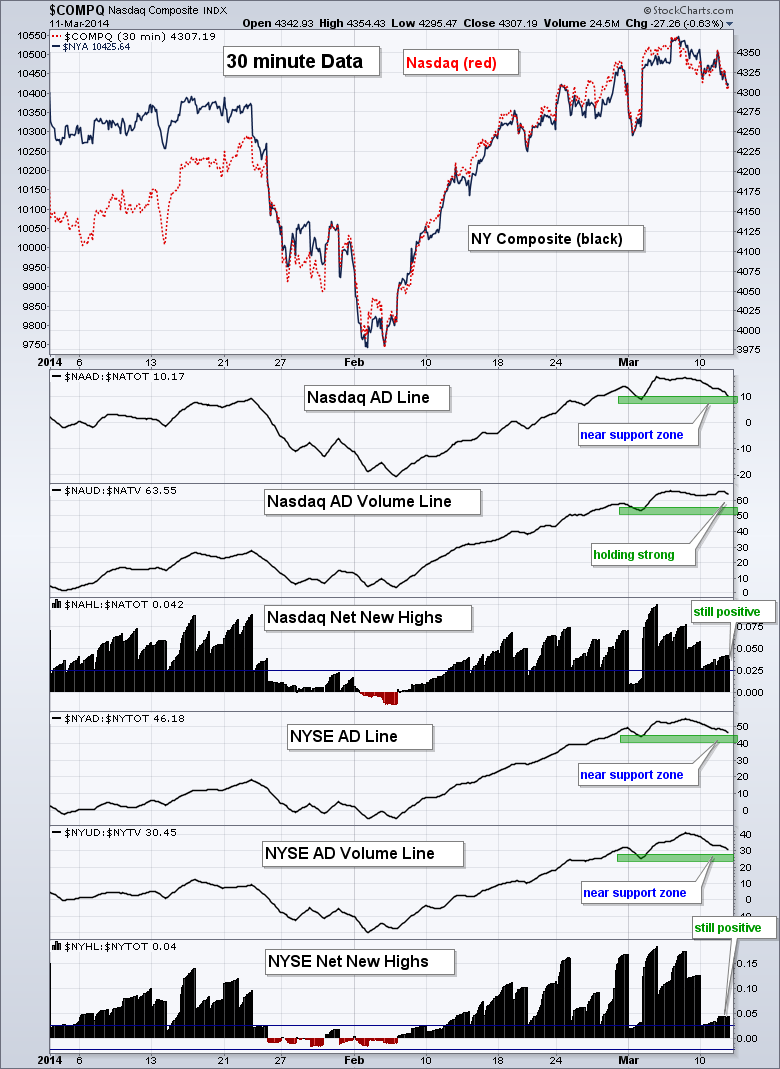Stocks extended their correction with small-caps leading the way lower. The Russell 2000 ETF (IWM) and the Russell MicroCap iShares (IWC) led the major index ETFs lower with declines around 1%. All sectors were down with the Materials SPDR (XLB) and Energy SPDR (XLE) getting hit the hardest. Spot Copper ($COPPER) fell off a cliff the last few days and Spot Light Crude ($WTIC) declined below 100 for the first time since February 14th. Some of the tech groups were also hit as the Internet ETF (FDN) and Networking iShares (IGN) fell over 1.3%, and the Semiconductor SPDR (XSD) lost 1%. The breadth composite below shows the Nasdaq and NYSE AD Lines edging towards support. The Nasdaq AD Volume Line is holding strong, but the NYSE AD Volume Line is also edging towards support. Support breaks in these four indicators would be short-term bearish. High-Low Percent for the Nasdaq and NYSE remains positive.
**This chart analysis is for educational purposes only, and should not
be construed as a recommendation to buy, sell or sell-short said securities**
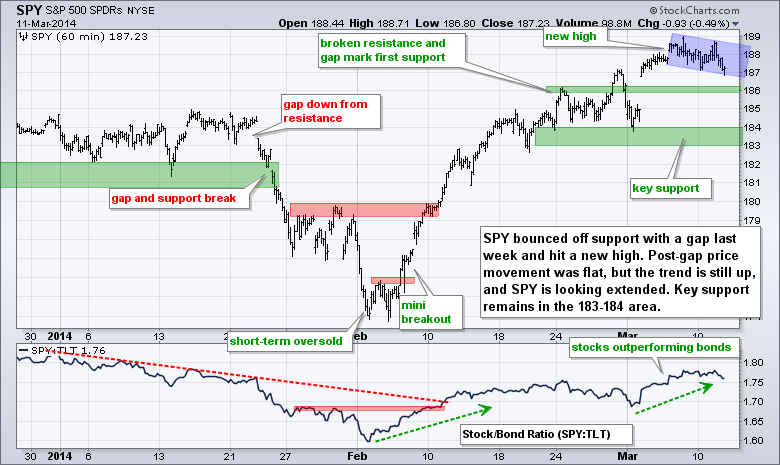
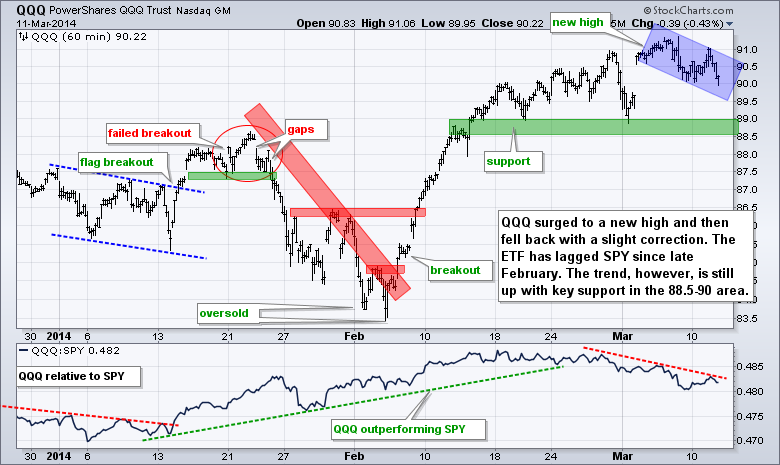
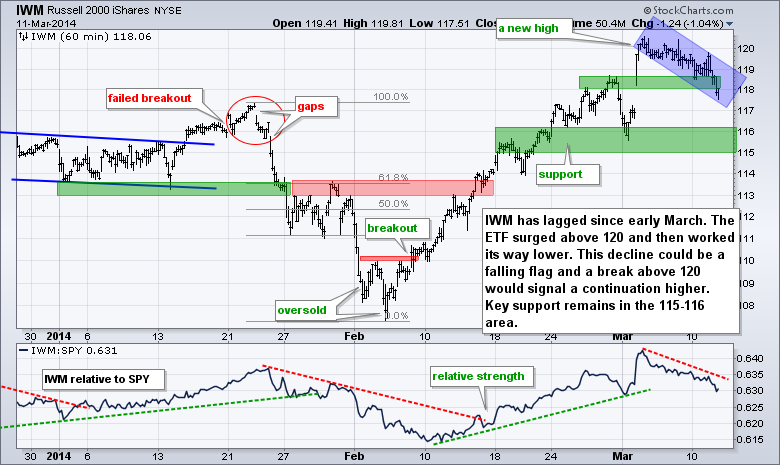
**************************************************************
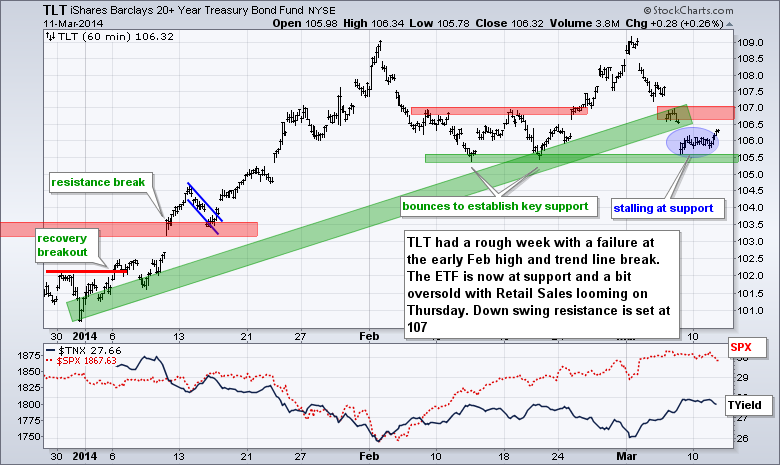
**************************************************************
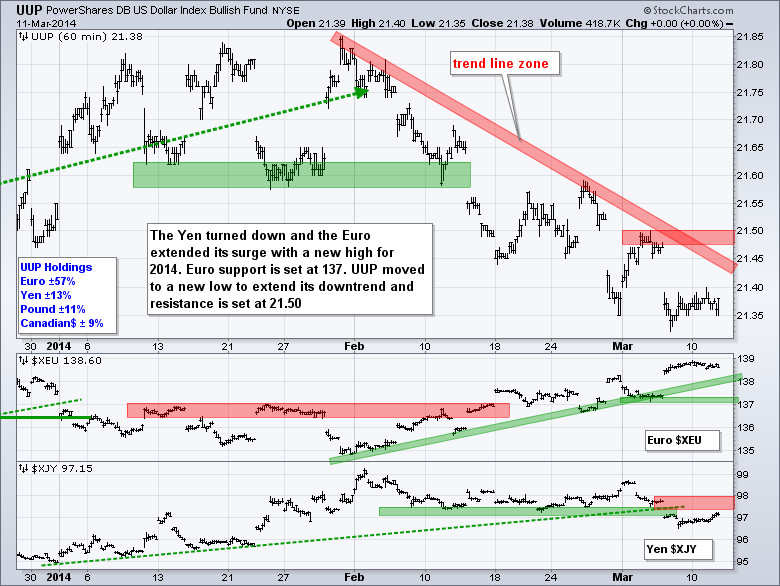
**************************************************************
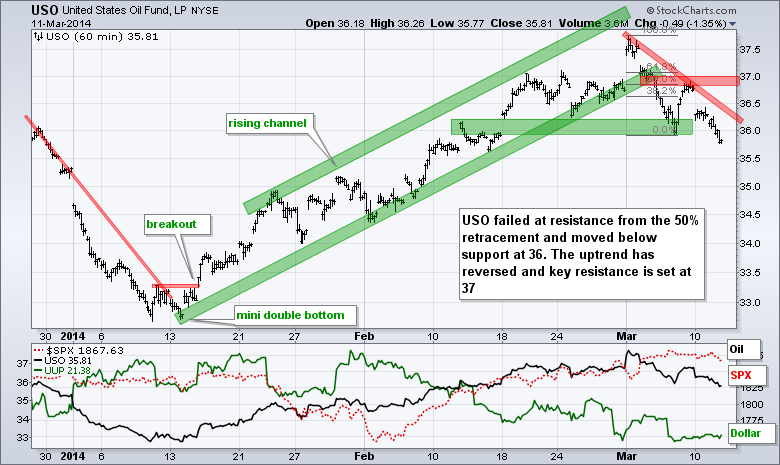
**************************************************************

***************************************************************
Key Reports and Events (all times Eastern):
Wed - Mar 12 - 07:00 - MBA Mortgage Index
Wed - Mar 12 - 10:30 - Crude Oil Inventories
Thu - Mar 13 - 08:30 - Initial Jobless Claims
Thu - Mar 13 - 08:30 - Retail Sales
Thu - Mar 13 - 10:00 - Business Inventories
Thu - Mar 13 - 10:30 - Natural Gas Inventories
Fri - Mar 14 - 08:30 - Producer Price Index (PPI)
Fri - Mar 14 - 09:55 - Michigan Sentiment
Charts of Interest: Tuesday and Thursday
This commentary and charts-of-interest are designed to stimulate thinking. This analysis is
not a recommendation to buy, sell, hold or sell short any security (stock ETF or otherwise).
We all need to think for ourselves when it comes to trading our own accounts. First, it is
the only way to really learn. Second, we are the only ones responsible for our decisions.
Think of these charts as food for further analysis. Before making a trade, it is important
to have a plan. Plan the trade and trade the plan. Among other things, this includes setting
a trigger level, a target area and a stop-loss level. It is also important to plan for three
possible price movements: advance, decline or sideways. Have a plan for all three scenarios
BEFORE making the trade. Consider possible holding times. And finally, look at overall market
conditions and sector/industry performance.

